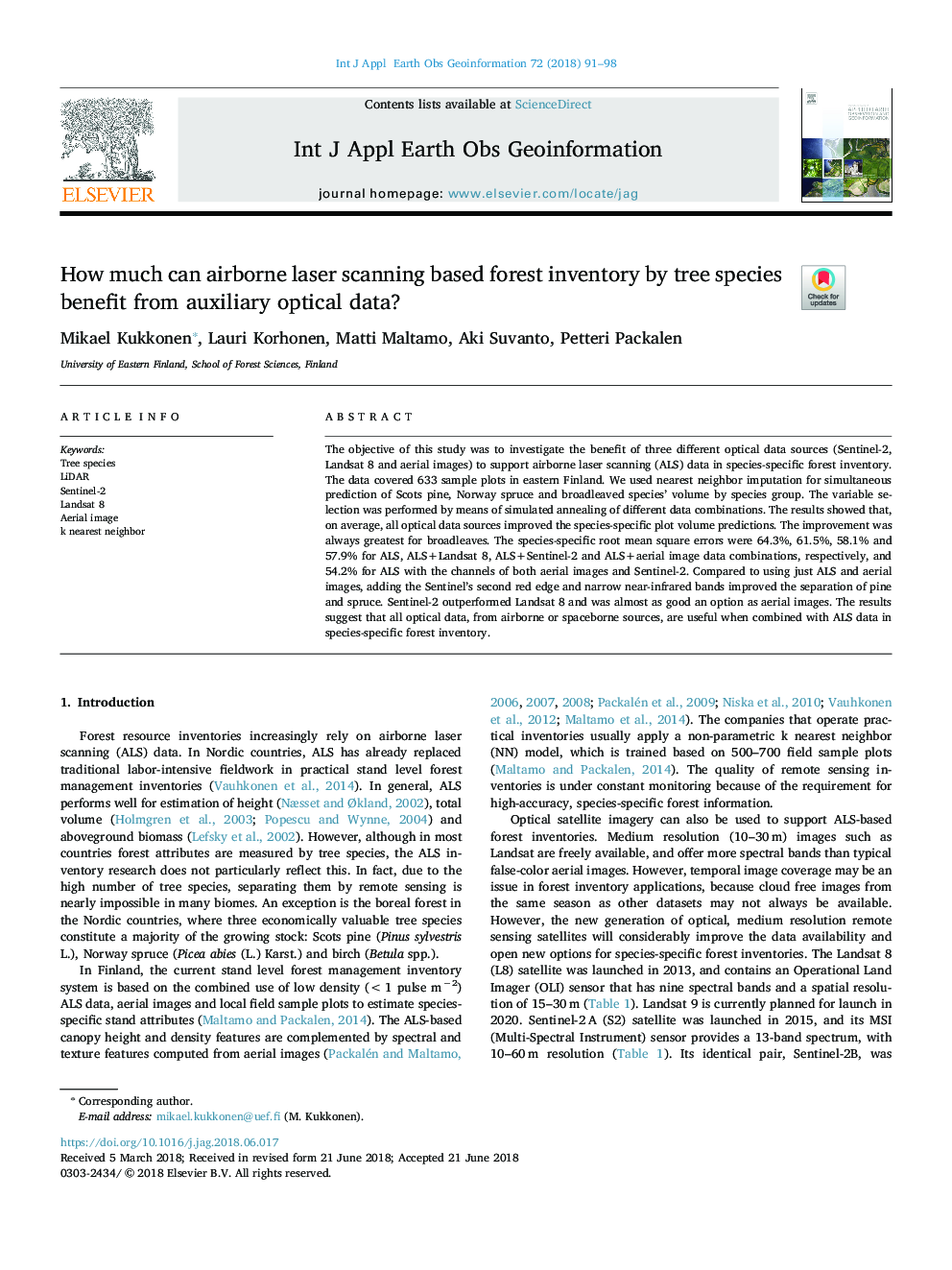| کد مقاله | کد نشریه | سال انتشار | مقاله انگلیسی | نسخه تمام متن |
|---|---|---|---|---|
| 8867763 | 1621785 | 2018 | 8 صفحه PDF | دانلود رایگان |
عنوان انگلیسی مقاله ISI
How much can airborne laser scanning based forest inventory by tree species benefit from auxiliary optical data?
ترجمه فارسی عنوان
چقدر می تواند موجودی جنگل های بر اساس اسکن لیزر بر اساس گونه های درختی از اطلاعات نوری کمکی استفاده کند؟
دانلود مقاله + سفارش ترجمه
دانلود مقاله ISI انگلیسی
رایگان برای ایرانیان
کلمات کلیدی
موضوعات مرتبط
مهندسی و علوم پایه
علوم زمین و سیارات
کامپیوتر در علوم زمین
چکیده انگلیسی
The objective of this study was to investigate the benefit of three different optical data sources (Sentinel-2, Landsat 8 and aerial images) to support airborne laser scanning (ALS) data in species-specific forest inventory. The data covered 633 sample plots in eastern Finland. We used nearest neighbor imputation for simultaneous prediction of Scots pine, Norway spruce and broadleaved species' volume by species group. The variable selection was performed by means of simulated annealing of different data combinations. The results showed that, on average, all optical data sources improved the species-specific plot volume predictions. The improvement was always greatest for broadleaves. The species-specific root mean square errors were 64.3%, 61.5%, 58.1% and 57.9% for ALS, ALS+Landsat 8, ALS+Sentinel-2 and ALS+aerial image data combinations, respectively, and 54.2% for ALS with the channels of both aerial images and Sentinel-2. Compared to using just ALS and aerial images, adding the Sentinel's second red edge and narrow near-infrared bands improved the separation of pine and spruce. Sentinel-2 outperformed Landsat 8 and was almost as good an option as aerial images. The results suggest that all optical data, from airborne or spaceborne sources, are useful when combined with ALS data in species-specific forest inventory.
ناشر
Database: Elsevier - ScienceDirect (ساینس دایرکت)
Journal: International Journal of Applied Earth Observation and Geoinformation - Volume 72, October 2018, Pages 91-98
Journal: International Journal of Applied Earth Observation and Geoinformation - Volume 72, October 2018, Pages 91-98
نویسندگان
Mikael Kukkonen, Lauri Korhonen, Matti Maltamo, Aki Suvanto, Petteri Packalen,
